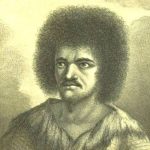
Country Overview:
Resistance by native Caribs prevented colonization on St. Vincent until 1719. Disputed between France and the United Kingdom for most of the 18th century, the island was ceded to the latter in 1783. Between 1960 and 1962, Saint Vincent and the Grenadines was a separate administrative unit of the Federation of the West Indies. Autonomy was granted in 1969 and independence in 1979.
Location:
Caribbean, islands between the Caribbean Sea and North Atlantic Ocean, north of Trinidad and Tobago
Geographic coordinates:
13 15 N, 61 12 W
Area:
Total: 389 sq km (Saint Vincent 344 sq km) , land: 389 sq km, water: 0 sq km
Area – Comparative:
Twice the size of Washington, DC
Land boundaries:
0 km
Coastline:
84 km
Climate:
Tropical; little seasonal temperature variation; rainy season (May to November)
Terrain:
Volcanic, mountainous
Elevation extremes:
Caribbean Sea 0 m
Highest Point:
La Soufriere 1,234 m
Natural Resources:
Hydropower, cropland
Population:
118,432 (July 2008 est.)
Nationality:
Saint Vincentian(s) or Vincentian(s)
Nationality:
Saint Vincentian or Vincentian
Ethnic groups:
Black 66%, mixed 19%, East Indian 6%, European 4%, Carib Amerindian 2%, other 3%
Religions:
Anglican 47%, Methodist 28%, Roman Catholic 13%, other (includes Hindu, Seventh – day Adventist, other Protestant) 12%
Languages:
English, French patois
Country Name:
Saint Vincent and the Grenadines
Government Type:
Parliamentary democracy
Capital Name:
Kingstown
Independence:
27 October 1979 (from UK)
National Holiday:
Independence Day, 27 October (1979)
Constitution:
27 October 1979
Legal System:
Based on English common law; has not accepted compulsory ICJ jurisdiction
Executive Branch:
Chief of state: Queen ELIZABETH II (since 6 February 1952); represented by Governor General Sir Fredrick Nathaniel BALLANTYNE (since 2 September 2002)
Head of Government:
Prime Minister Ralph E. GONSALVES (since 29 March 2001)
Cabinet:
Cabinet appointed by the governor general on the advice of the prime minister
Elections:
The monarch is hereditary; the governor general is appointed by the monarch; following legislative elections, the leader of the majority party is usually appointed prime minister by the governor general; deputy prime minister appointed by the governor general on the advice of the prime minister





